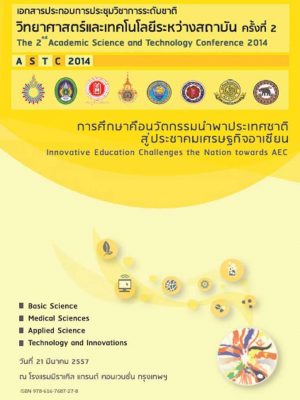การวิจัยและพัฒนากระบวนการเรียนรู้ เพื่อเสริมสร้างการรู้เท่าทันสื่อสำหรับเยาวชนไทยตามแนวจิตตปัญญาศึกษา
ABSTRACT
การวิจัยครั้งนี้เป็นการวิจัยและพัฒนา มีวัตถุประสงค์เพื่อวิจัยและพัฒนากระบวนการเรียนรู้ เพื่อเสริมสร้างการรู้เท่าทันสื่อสำหรับเยาวชนไทยตามแนวจิตตปัญญาศึกษา กลุ่มตัวอย่างคือนักเรียน มัธยมศึกษาตอนต้นและตอนปลายแบ่งเป็น ๓ กรณีศึกษา จำนวน ๑๙ คน ๑๒ คน และ ๑๑ คน ตามลำดับ วิธีดำเนินการวิจัยคือพัฒนากิจกรรมการเรียนรู้ตามกลุ่ม สูงและกลุ่มตำ จากนั้นนำผลการวิเคราะห์ที่ได้ไปใช้กับกรณีศึกษาที่ ๓ และนำเสนอต่อไป
ผลการวิจัยพบว่ากระบวนการเรียนรู้ที่ทำให้เกิดการรู้เท่าทันสื่อของเยาวชนไทยตามแนว จิตตปัญญาศึกษาที่เหมาะสม คือ ๑) ผู้เรียนต้องมีความสนใจและเต็มใจเรียนรู้ ๒) เน้นกระบวนการพูด คุยแลกเปลี่ยน สนทนาเป็นกลุ่ม ๓) บรรยากาศในการเรียนรู้ต้องเปิดกว้าง ไม่มีอคติ ๔) เน้นการตั้งโจทก์ ปัญหาที่เกี่ยวข้องกับชีวิตประจำวัน ๕) กิจกรรมการเรียนรู้ที่เหมาะสมกับนักเรียนกลุ่มสูงคือการใช้วิธี สุนทรียสนทนา และ ๖) กลุ่มตำ คือ กิจกรรมสันทนาการ
This research is a Research and Development. The objectives are to research and develop the learning process in order to promote media literary for Thai children in contemplative education. The samplings (students in lower and upper secondary levels) are divided into 3 case studies: 19, 12 and 11 students. The research methods are to develop learning activities in contemplative education and the media literacy theory ; and try them out on the 1st and 2nd case studies. The tried out result can divide students to be the high group and the low group. Then the analyzed results are implemented to the 3rd case study in order to propose the suitable learning process for Thai youth.
The research results found that the learning process which effected to be the media literacy of Thai youth in the suitable contemplative education were: 1) the learner must be interested in and willing to learn; 2) to emphasize the exchanged group discussion process; 3) learning atmosphere must be wide-opened, no prejudice; 4) to emphasize the set up problems related to daily life; 5) learning activities, which were suitable to students in the high groups, were the methods of aesthetic discussion; and 6 ) the low groups were entertaining activities.






